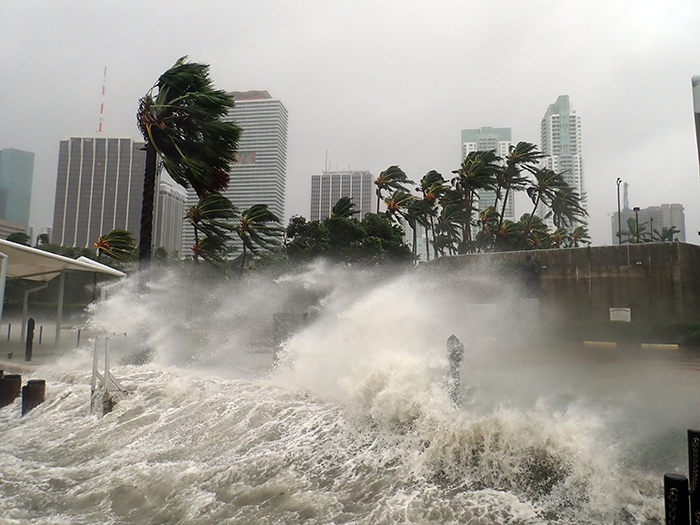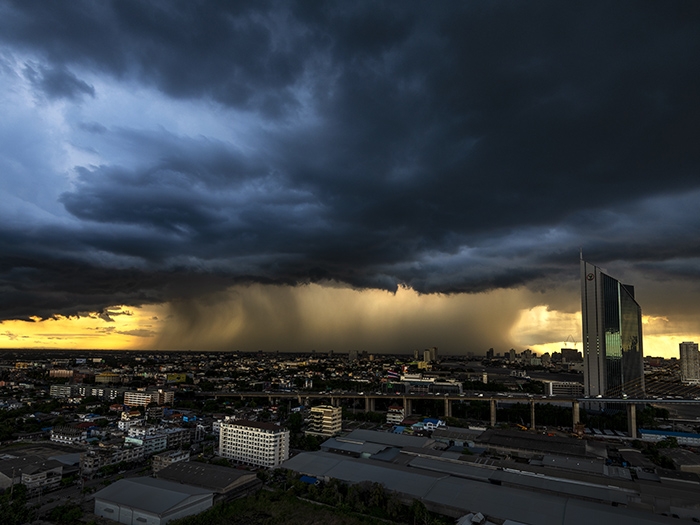Hurricane Preparedness: How Businesses Can Weather Another Day, Once the Storm Has Passed

Though it may seem like summer is winding down, the months of August and September bring their own perils and exposures before insurers can put summer risks to bed.
Atlantic hurricane season, which rears its strongest head from mid-August through mid-October, is likely to produce catastrophic impact with some of its storms, like it has in previous years. However, with the impacts of climate change increasing year after year, it is even more likely that the frequency and severity of hurricane storms will create even more exposure for carriers to cover.
“If you had properties in the coastal area, they were always at risk of storm damage,” said Tracey Kilcullen, vice president for Graham Company.
“In the past, while the storm was strong, property was strong enough to withstand it. What we are seeing now is those properties that could once withstand those storms are experiencing damage where maybe they never had before.”
Kilcullen also pointed out the fact that properties could also face being affected by multiple storms in the same hurricane season, thus intensifying the damage and impacting businesses before they can recover from prior storms.
“Being prepared, I think has hit home more with people who are in an area that’s anywhere near [or in] a hurricane zone,” she said.
Crafting a Preparation Plan
Preparation is key to mitigate the worst of hurricane risk, especially before a storm has even formed and been famously named.
“We communicate with our clients about this [frequently],” Kilcullen said. “You have to have your plan well before the storm is going to hit, you don’t want to be planning on the eve of the storm’s [arrival.]”
Strong and legitimate communication is a lynch point in a business’ preparations. These communications include having a well-documented storm response in place that can be shared with teams, identifying proper response teams, and ensuring all contact information “is regularly reviewed and updated,” per Kilcullen.
In the direst of circumstances, properties must also plan for emergency evacuation plans, should a storm produce conditions that would result in danger for those living near business properties or in residential areas. Again, Kilcullen stressed the importance of communication in these types of situations.
In the Aftermath
As crucial as a preparation plan is prior to a storm, the same importance should be administered to the strategy that will be enacted after the storm has passed.
Kilcullen said, “[Businesses] are going to want to have a disaster recovery plan, so if there has been strong impact or damage, what are you going to expect your response team to take care of?”
For starters, Kilcullen noted an optimal first initiative is having businesses identify key external vendors, which include restoration contractors and suppliers. These relationships should be established well before any sort of storm is expected to make landfall so that the process post-storm is as seamless as possible.
For the physical impact, Kilcullen also urged businesses to attempt to either pre-negotiate rates/services, or establish a guaranteed service, “because everyone in the community is going to seek the same services.”
“You want to try to get your business to the top of that response list, to make sure you’re protected,” she said.
Additionally, businesses can protect themselves from further damage by enacting simpler measures, which include boarding up doors and windows, securing any glass that could create an exposure for water infiltration, removing any signage, and covering landscaping.
Protecting the Intangible
While many may immediately think of the physical implications of a hurricane, businesses must also be aware of guarding what cannot be seen with the naked eye.
The risk of cyber threats and attacks have intensified as many businesses and companies switch to storing valuable data in digital formats.
“It’s not just about protecting [the] business, the brick and mortar, but about protecting data and important documents,” Kilcullen said.
She continued, “Make sure your IT systems are all backed up and think about taking any critical documents and keep those in [cloud-based] storage applications, so that you can access them more easily if there’s damage to your hardware.”
Talk the Talk
Throughout Kilcullen providing businesses with the knowledge to develop hurricane mitigation strategies, one theme was evident: communication.
As mentioned before, communication is vital for businesses who are faced with assessing and tending to hurricane damage. This communication should not just reside within the internal operations of the business, but with its external partners as well.
For one, maintaining a reasonable level of dialogue with its broker should be high on a business’ priority list.
“Long before the storm, [businesses should] understand what [their] insurance coverages [are,] and that the coverage in place accurately reflects the value of the property, business, and business interruption,” Kilcullen said.
For those businesses in a danger zone, it is likely that they experience some sort of damage from a hurricane throughout their operations. But with a clear, concrete strategy for pre- and post-hurricane, and steady lines of communication, businesses are doing what they can to see another day once the storm has passed. &











